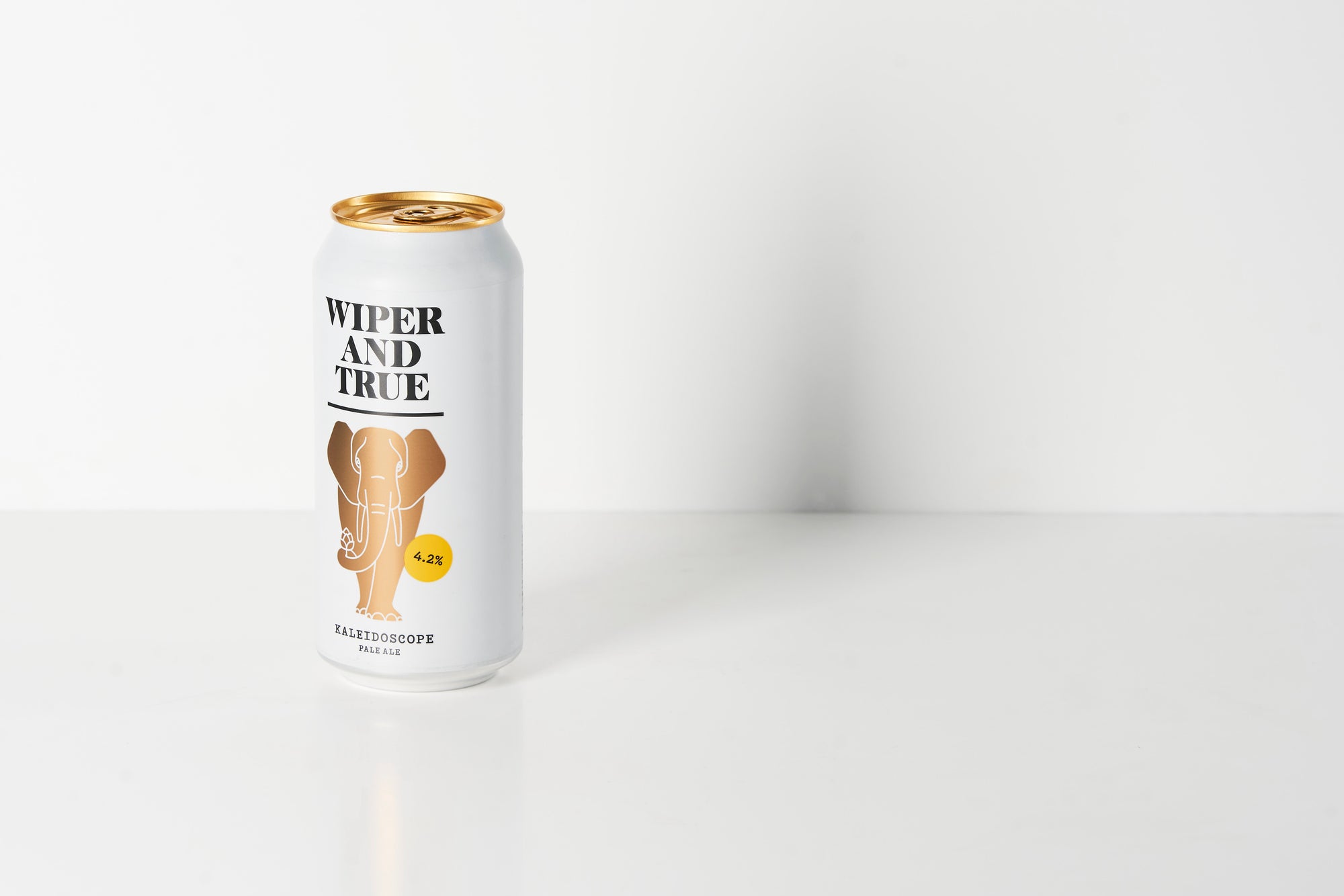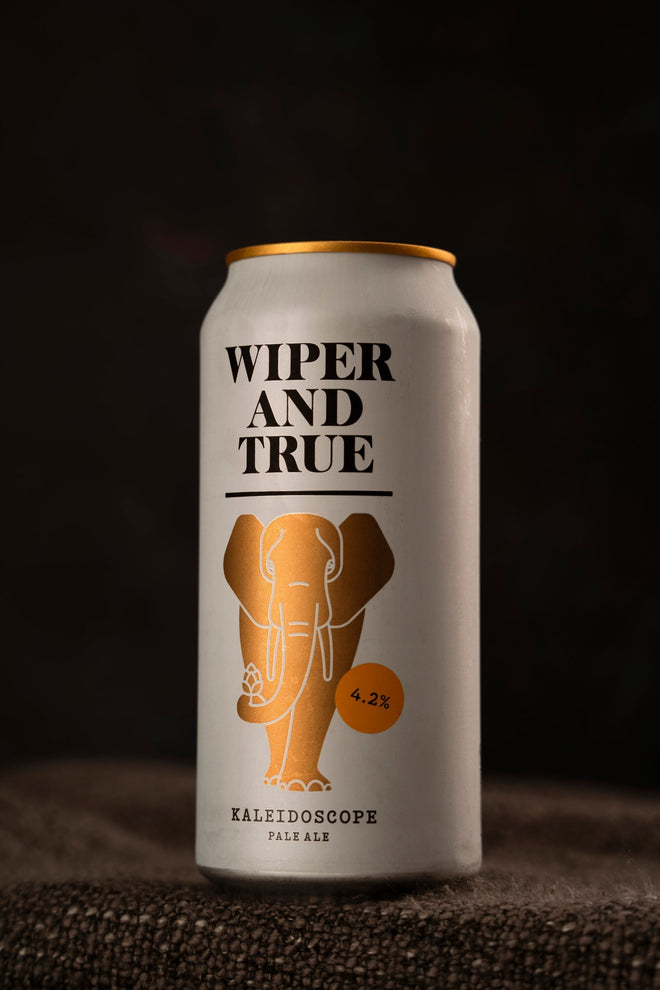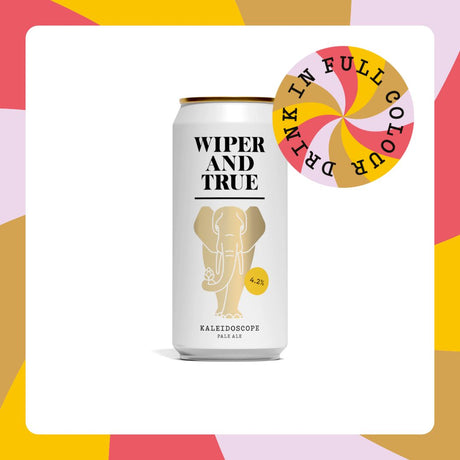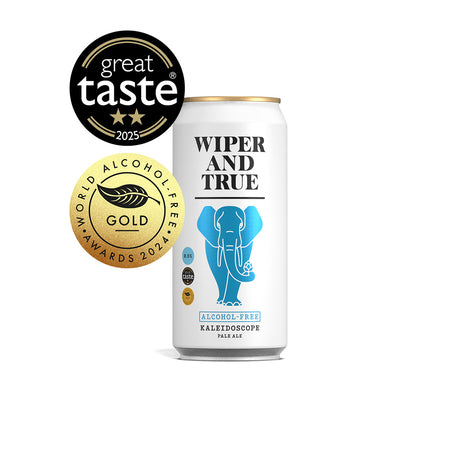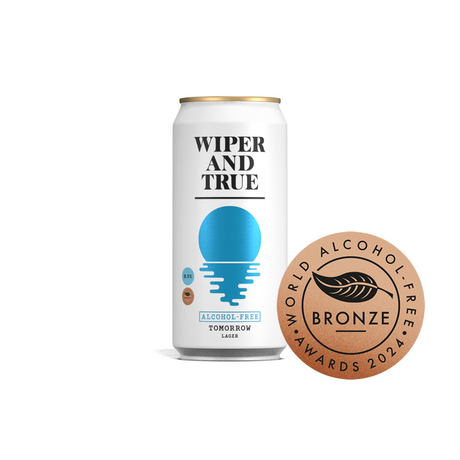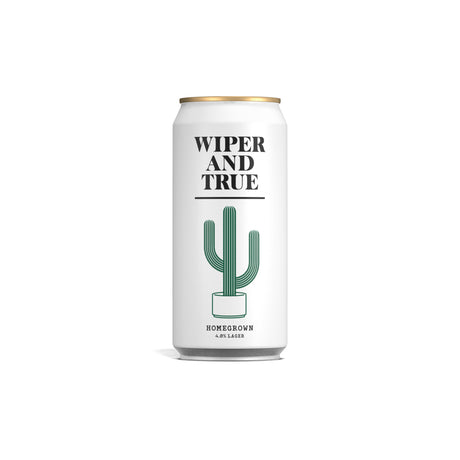On May 1st we release Upside Down, a lovely new 5.0% Pale Ale brewed with hops grown in Slovenia. The rare varietal we used is - rather majestically - named Styrian Dragon. The beer itself is a silky soft, hazy Pale Ale with notes of lemon and passionfruit. Its recipe was designed to evoke some of the expressive, magical flavours of American style pale ales which we know and love, whilst using some ingredients grown a little closer to home. In this article we share an honest picture of the environmental impact of using Slovenian hops in a beer.

Upside Down, 5.0% Slovenian Pale Ale
A BEER'S KEY INGREDIENTS
Before we dig into the details around the environmental impact of European hops, let’s recap on the basics. All beers (within reason - we’re looking at you, gruit) rely on the same four key ingredients: water, malt, hops and yeast. That’s normally their order by weight, too; water being the largest ingredient; yeast the smallest. When it comes to hops, different hop growing regions are renowned for different characteristics, a little like grape growing regions and wine.
The hops used in Upside Down were grown by Simon Gajsek, whose hop yard is based in Latkova Vas, in the eastern-central region of Slovenia, historically known as Styria. Their mighty name, Styrian Dragon, comes from their vigorous growth habit; these ‘bines’ (a bit like a vine) are extremely strong growing, with dramatic forking branches - like those of a dragon’s tail. More evocatively, though, the ‘Dragon’ in their nomenclature also refers to the immensely potent aroma of the hops themselves - described as being almost like the fire that erupts from a dragon’s jaws.

An aerial photo of a Slovenian hop farm
THE CHALLENGE WITH HOPS
At Wiper and True, we always buy the finest, freshest hop crops for our beers, mainly selecting varieties from America and New Zealand. This is, quite simply, because we love the flavours and aromas of hops from these regions, grown by talented, experienced producers. This means that although they’re the third smallest ingredient by weight in most of our beers, hops are, in many ways, the most contentious ingredient from an environmental impact perspective. In large part this is due to the way they’re grown and stored (often hops are chilled or frozen to ensure maximum freshness), but also because of the transportation required to move them - often halfway around the world - from where they’re grown to our brewery. We’re often asked why we don’t use more British hops in our beers, and it’s simply a question of achieving the flavours and aromas we’re looking for in our recipes. The majority of the malt we use at Wiper and True is grown locally, and one day we would love to use all-native hops in the same way. In some of more traditional brews, such as Milk Shake and our new cask Mild, we’re already using British hops, but sadly the native varietals currently available commercially simply aren’t a match for their new world counterparts when used in more contemporary beers like Kaleidoscope or our hoppy seasonal IPAs.
DEVELOPMENTS IN HOP AVAILABILITY
We never rule anything out though, and we’re always looking for ways to reduce our impact on the environment. We love working with hop companies from closer to home, and are constantly trialling new varieties and innovations coming through to the market. Our brew team had been closely following the development of hop growing in Slovenia for a while, and we were really intrigued about the buzz around these varieties, grown a lot closer to home. After some initial quality tests, we leapt at the chance to work with British hop supplier Charles Faram, who stock and distribute Slovenian hops in conjunction with Slo Hops.
Speaking about their partnership with the Slovenian growers, Charlie from Charles Faram told us:
“Hop growing in Slovenia has many challenges. Its climate is sub-Mediterranean, meaning it has long, sometimes extremely hot summers, but also the benefits of cold winters with Alpine influence. Growers in Slovenia have recognised the requirement for new varieties, and the growers and Slovenian government have set up an international centre of excellence in hop breeding, the Slovenian Hop Research Institute. Charles Faram are in regular contact with this institution, and visit on a regular basis, helping to select plants with commercial prospects, for Slovenian growers to plant and hopefully insure the future of hop growing in this incredibly beautiful part of Europe. Styrian Dragon is one of these plants; it has new world aromas and flavours, whilst also showing the refined terroir of Slovenia.”
THE IMPACT OF USING SLOVENIAN HOPS
So, flavours and botany aside, what are the environmental impacts of choosing hops from our European neighbours, rather than from the South Pacific or North America? Looking at food miles from hop transportation alone, the difference is stark. To get to Charles Faram in Worcestershire, Styrian Dragon hops travel 1420 kilometres from Simon Gajsek’s farm in Slovenia. This equates to 836 kilograms of C02 emissions. Most trailers from Slovenia carry around 210 bales at 60 kilograms per bale, equalling 12,600 kilograms. Using these figures, Charles Faram were able to calculate grams of C02 per kilogram of hops:
836 ÷ 12,600 × 1000 = 66.34 g of C02 per kg of hop
Figures taken from Charles Faram’s 2022 Sustainability Evaluation Report
Mapping the same process of transporting American hops, Charles Faram estimate a total of 136 grams of C02 is produced when transporting every kilogram of hops. This means that by using European hops, we have effectively halved the amount of C02 emitted in transporting the ingredients to the United Kingdom.
Clearly, this doesn’t tell the entire story. Energy is also needed to grow, harvest and package the hops, and to transport the hops from Charles Faram to Bristol (a 7 tonne truck delivering 100 kilograms to Bristol generates 0.83 kilogram of C02 on a 78 kilometre journey). Then there’s storing the hops in our cold store at the brewery to preserve their freshness; not to mention the energy used to brew, package and distribute the finished beer. To get a full understanding of the environmental impact of different hops we would need a full life cycle analysis, which isn’t currently available for all the ingredients we use. However, based on food miles alone, there’s certainly a very compelling argument for using more Slovenian hops in our beers.
 Slovenian Hop Farming
Slovenian Hop Farming
WHAT'S NEXT?
So, where do we go from here? This is one step forward in our constant journey towards becoming a more sustainable brewery. It’s not perfect, and it’s not the end of the road for our work with other hop regions. We’ll continue monitoring the UK and European hop markets for new variants that can hold their own in a hazy IPA, and we’ll continue working hard across the business to become the most sustainable brewery we can.
YOUR FEEDBACK
Next up, we’d love your feedback on the beer! If our drinkers enjoy the flavours and aromas that Styrian Dragon adds to Upside Down, that’s really useful information to us. So, track down a pint or order a can or two online, and let us know what you think on hello@wiperandtrue.com, or on the socials.
